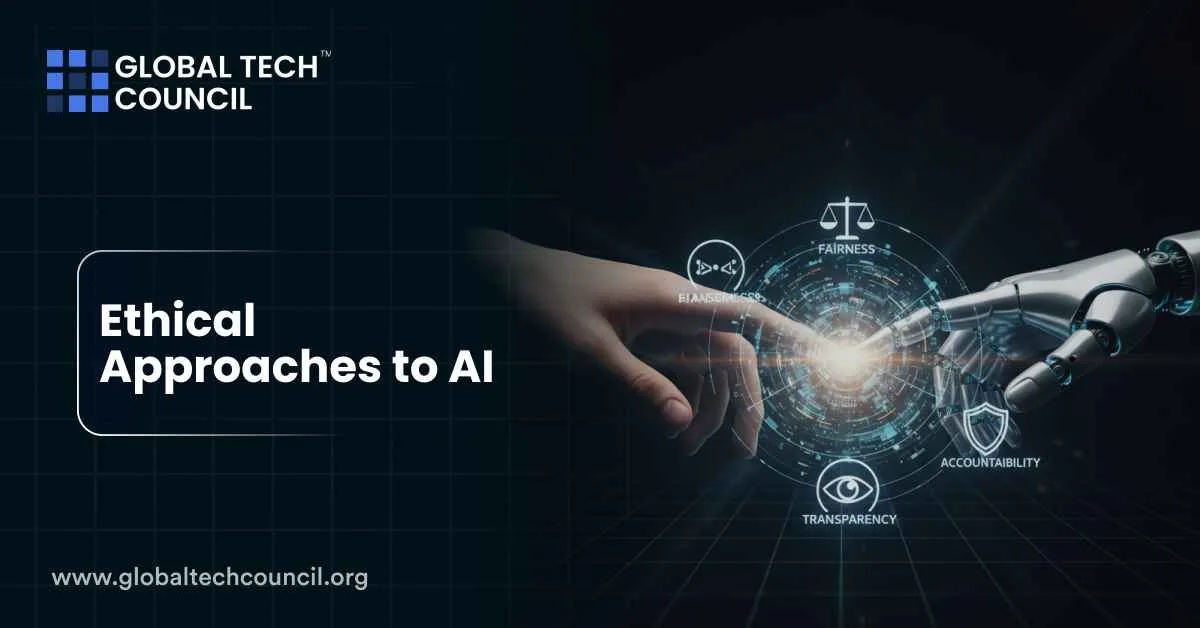 Ethical approaches to AI focus on ensuring that artificial Intelligence systems are safe, fair, transparent, and aligned with human values. As AI becomes more powerful, questions of trust, accountability, and responsible use are no longer optional—they are at the heart of how technology is designed and deployed. Understanding the main approaches to AI ethics helps businesses, governments, and individuals use this technology in ways that protect people and society.
Ethical approaches to AI focus on ensuring that artificial Intelligence systems are safe, fair, transparent, and aligned with human values. As AI becomes more powerful, questions of trust, accountability, and responsible use are no longer optional—they are at the heart of how technology is designed and deployed. Understanding the main approaches to AI ethics helps businesses, governments, and individuals use this technology in ways that protect people and society.
Many professionals are now exploring learning pathways such as an artificial intelligence certification to better understand the ethical, technical, and regulatory aspects of AI. These programs help individuals grasp both the benefits and the risks, preparing them to work responsibly with AI systems.
Core Principles of Ethical AI
Most ethical frameworks for AI begin with a set of shared principles. These include fairness, accountability, transparency, and respect for human rights. UNESCO and other organizations describe these as “do no harm” guidelines that ensure technology benefits humanity rather than creating harm.
Industry and Policy Frameworks
Tech companies and governments are creating their own frameworks. For example, Microsoft highlights values like accountability and inclusion, while IBM emphasizes trust and governance. On a policy level, regulators encourage explainability, privacy protection, and regular audits of AI systems. These frameworks serve as guardrails to keep development aligned with ethical priorities.
Applied Approaches in AI Design
Researchers identify three main ways ethics is embedded into AI design. The embedded ethics approach adapts systems to real-world contexts. The principle-based approach sets universal standards such as fairness or justice. The value sensitive design approach includes stakeholders in design processes to make sure human values are reflected.
Comparison of Ethical AI Approaches
| Approach | Core Idea | Why It Matters |
| Principle-Based | Defines universal rules such as fairness, safety, and rights | Provides a shared foundation across industries and governments |
| Embedded Ethics | Tailors AI to the specific context of use | Ensures systems remain relevant and practical for real-world situations |
| Value Sensitive Design | Involves stakeholders and end users in system design | Makes AI more inclusive and aligned with diverse human needs |
| Value Learning | Enables AI to learn and align with human values dynamically | Supports safer autonomy as AI systems grow more independent |
This table highlights the most recognized approaches to embedding ethics into AI today.
Explainable AI and Accountability
One of the most pressing issues in AI is the so-called black box problem. AI models can be complex, making it hard to understand how they reach decisions. Explainable AI, often called XAI, is designed to solve this by making outputs more transparent. This supports accountability and helps meet regulations such as the right to explanation under GDPR.
Addressing Bias and Fairness
Bias in AI systems has real-world consequences, from unfair hiring algorithms to unequal access in healthcare. Ethical AI requires constant testing and monitoring to detect bias in datasets and outputs. Training teams in data ethics, such as through a Data Science Certification, can help ensure that professionals understand how to manage bias and apply fairness in their workflows.
Autonomy and Human Oversight
As agentic AI systems become more autonomous, the need for human oversight grows stronger. Organizations are being urged to keep humans in the loop to avoid risks related to misalignment or misuse. Ethical audits, monitoring systems, and clear escalation processes are part of this approach.
Moral AI and Societal Impact
Beyond technical safeguards, some thinkers argue for moral AI—systems designed to align with human values and dignity at a deeper level. This perspective emphasizes that AI should not only follow rules but also support justice, sustainability, and respect for human life. Programs such as the Marketing and Business Certification are also exploring how these principles apply when AI drives business strategy and customer engagement.
Key Areas of Ethical AI Application
| Area | Focus | Impact |
| Transparency | Making AI decisions explainable and understandable | Builds trust and meets regulatory requirements |
| Fairness | Preventing bias and discrimination in AI outputs | Protects vulnerable groups and ensures equal opportunity |
| Accountability | Assigning responsibility for AI outcomes | Ensures organizations remain answerable for system use |
| Human Oversight | Keeping people in control of AI decisions | Prevents misuse and maintains human authority |
| Governance | Creating policies, audits, and ethical standards | Guides AI development toward safe and responsible outcomes |
This table shows where ethical approaches are most urgently applied in AI today.
Why This Matters
AI is shaping the future of work, health, and society. Without clear ethical approaches, the risks range from biased systems to loss of public trust. Professionals need both awareness and training to respond to these challenges. Programs such as Deep tech certification visit the Blockchain Council offer structured learning on advanced technologies and their ethical use. When combined with strong human-centered skills, these programs help professionals design AI systems that are safe, fair, and beneficial.
Conclusion
Ethical approaches to AI combine principles, frameworks, and practical safeguards to ensure technology serves people responsibly. From explainability and fairness to oversight and governance, these methods guide both developers and users in applying AI safely. The future of AI depends not only on how advanced the systems become but also on how carefully they are aligned with human values. Investing in ethical understanding today will help create an AI-driven world that is both innovative and trustworthy.
Leave a Reply